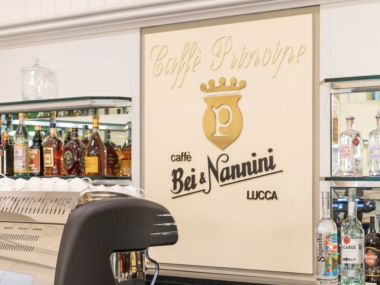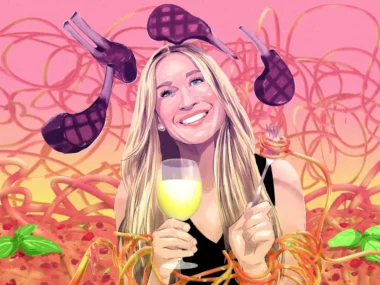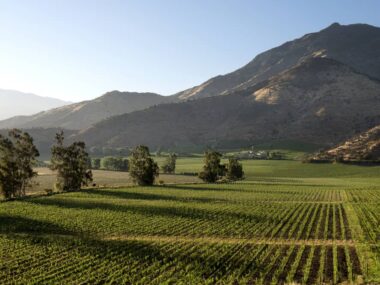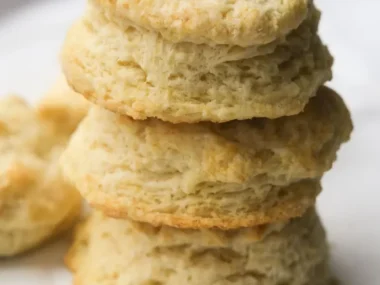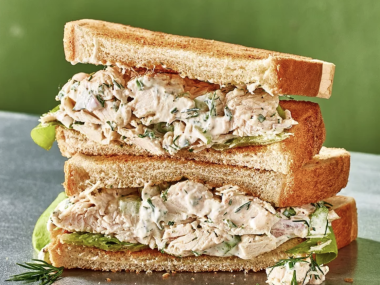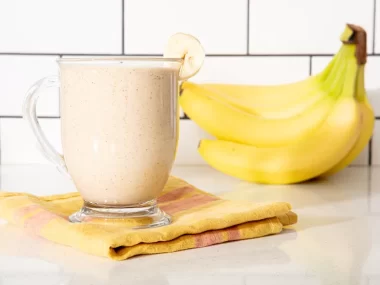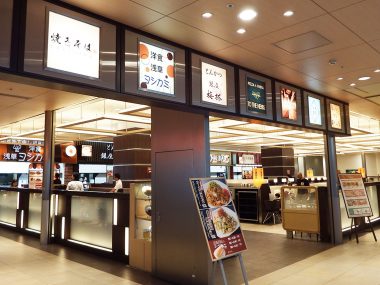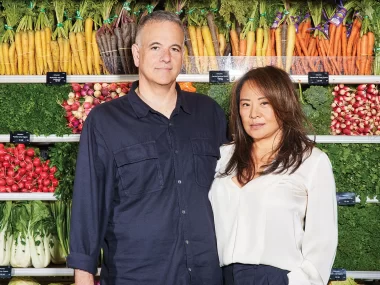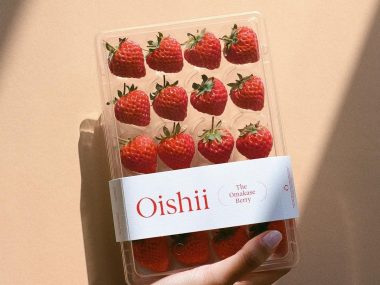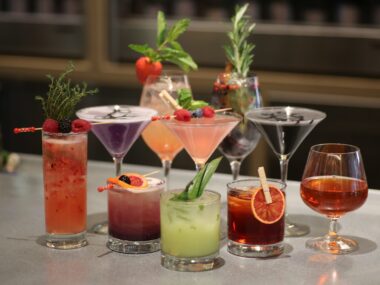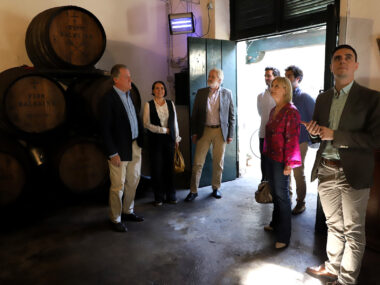With climate change, geopolitical conflicts and supply chain bottlenecks, consumers need to get used to the tax of supply volatility.
It was reported that scientists have warned that the mushrooms used to make this type of cheese are about to run out, and that this threatens its production. But it later turned out that this news caused a stir for no reason. Tatiana Giraud, one of the researchers who prepared the study, also acknowledged that the famous cheese will not leave us, and she said in an interview with Bloomberg, “The production of Camembert cheese does not face any danger in the foreseeable future.”
The Camembert cheese news may have been false, but it seemed logical. Over the past 12 months, we had heard warnings about shortages in peaches, avocados, and beef. In all of these cases, farm production of certain foodstuffs was declining, but American shoppers had no difficulty obtaining any. Of these products, companies have made strenuous efforts so that consumers do not notice the shortage.
Food is on shaky ground
Our food supplies today are on fragile ground, in light of the intersection of several unforeseen events, from the worsening climate change to geopolitical conflicts, the epidemic, wars, supply chain bottlenecks, and a major labor shortage. Despite the decline of the epidemic, and the noticeable improvement in supply chains, it is still unlikely that this chaos will end soon.
Pawan Joshi, a supply chain expert at the programming company E2open, stated that Americans have become more dependent on parts of the world for obtaining food than ever before, and the nature of American cuisine changed after World War II, when the length of time increased. Supply chains, transportation, and food production techniques advanced, and, lo and behold, New Yorkers could find asparagus in grocery stores during the winter.
Most of us are accustomed to taking these things for granted. We did not notice, for example, when President Donald Trump’s war with China deprived soybean farmers of one of their best markets. However, the fragility of food supplies was not hidden from anyone during the Corona epidemic. The outbreak of the virus in meat factories forced stores to limit the amount of products that consumers could buy, while lines at food banks stretched for miles, and farmers around the world protested, spilling milk, breaking eggs and leaving fruit to rot on branches. By August 2021, we are finding that store shelves are often empty of products.
A phase of fluctuations
Packaged food companies have faced major supply chain problems due to the pandemic, but also as a result of the Russia-Ukraine war. Companies such as Hostess, General Mills, Conagra Brands, and Mondelēz International complained during 2022 earnings calls about the scarcity of ingredients they use in… Its products, according to what was reported by the “Supply Chain Dive” website, which indicated that the main focus was on grains and vegetable oils, of which Ukraine is one of the largest producers.
Climate change has also wreaked havoc on supplies. That summer, a drought wiped out Canada’s mustard seed crop, so much so that French shoppers noticed the absence of Dijon mustard from store shelves even in the Dijon region itself.
This year, cocoa prices rose to record levels, as a result of chronic scarcity of crops due to severe weather conditions and the spread of diseases, and because of the very low wages received by farmers who are unable to invest in improving cocoa trees, even though they supply a global chocolate market worth more than $100 billion. With the main ingredient. The lack of rain also caused a shortage of Robusta coffee beans for the fourth year, and Brazil was hit by a heat wave, which means that the world’s largest supplier of orange juice is suffering from its worst crop in 36 years. The hits don’t seem to stop.
“We are in an era of volatility,” Salman Amin, CEO of Pladis Foods in London, which houses Godiva and other snack brands, told me in April. In recent years, his company has faced disruptions in the availability of basic ingredients other than chocolate, such as wheat, palm oil, sugar, and milk derivatives.
Search for new sources
But somehow, these products remained available in stores. For example, Kraft Heinz, maker of Gray Poupon mustard, beat out French Dijon mustard makers after searching “all over the world” to find the mustard seeds it needed, according to company spokeswoman Lynsey. elf. “As a result, Gray Poupon experienced no significant disruption to its services,” she said, and Kraft Heinz avoided what it said was “a $50 million business shortfall.” Chocolate, coffee and orange juice are also available.
In the United States, climate change has taken its toll on favorite fruits and vegetables, but retailers are adapting to unpredictable weather, and consumers likely won’t notice the crop’s provenance changing. For example, last year, an unusually warm winter followed by a late frost wiped out more than 90% of Georgia’s peach crop, so stores turned to buying crops from other sources.
Online grocery retailer FreshDirect offered peaches from California. The company said that given the generally higher temperatures in Georgia, it is selling more citrus fruits from there, including varieties of mandarins and Cara Cara oranges.
The California floods in early 2023 caused the prices of romaine lettuce to rise, but the problems that previously affected this variety, from contamination with Escherichia coli bacteria to the Corona virus, on the other hand, helped boost the emerging indoor agriculture. Despite the floods, California still suffers from chronic drought, prompting some farmers to look for ways to adapt to this reality. Stuart Wolf, CEO of Woolf Farming & Processing, is converting some of his wasteland, where he previously grew highly irrigated almonds, into fields for agave, a desert plant from which drinks like tequila and mezcal are made. It is usually grown in Jalisco, Mexico, where it faces challenges of a different kind that have also led to a scarcity of production.
Fear is not enough to make a change
In general, all of these fluctuations translate into what I call a food supply fluctuation tax. They contribute to rising grocery prices, but we have become almost numb to inflation, and are unaffected by rising grocery bills. So we ignore the indicators that food producers, companies and scientists clearly hear and see.
Michael Hoffman, a professor emeritus at Cornell University who specializes in the impact of climate on food, believes that food insecurity may be the threat that “may” awaken the world to this common international existential threat, which the United Nations, the US Department of Agriculture, the European Food Safety Authority, and others have warned about. Counted and counted by other organizations. “Even Republicans fear the impact of climate change on their food,” he said, citing a poll from 2022.
But their fear does not appear to be severe. Although rising food prices are a primary concern, climate change ranked 18th out of 20 items in a poll on voter priorities conducted by the Pew Center in February, which included people of various political affiliations. “Dealing with international trade” came at the bottom of the priorities.
I applaud Hoffman for his dedication to his cause – he teaches his students, writes opinion pieces, and takes time to talk to journalists like me – but while I know he’s right on the scientific front, I have yet to see the public at large take this threat to our food supply seriously, from voters to officials. The elected. I want to believe that the disappearance of some types of food will open our eyes to the coming disaster, but as long as companies find ways to provide all of our favorite foods, I do not rule out that this will happen anytime soon.
Written by: Deena Shanker








